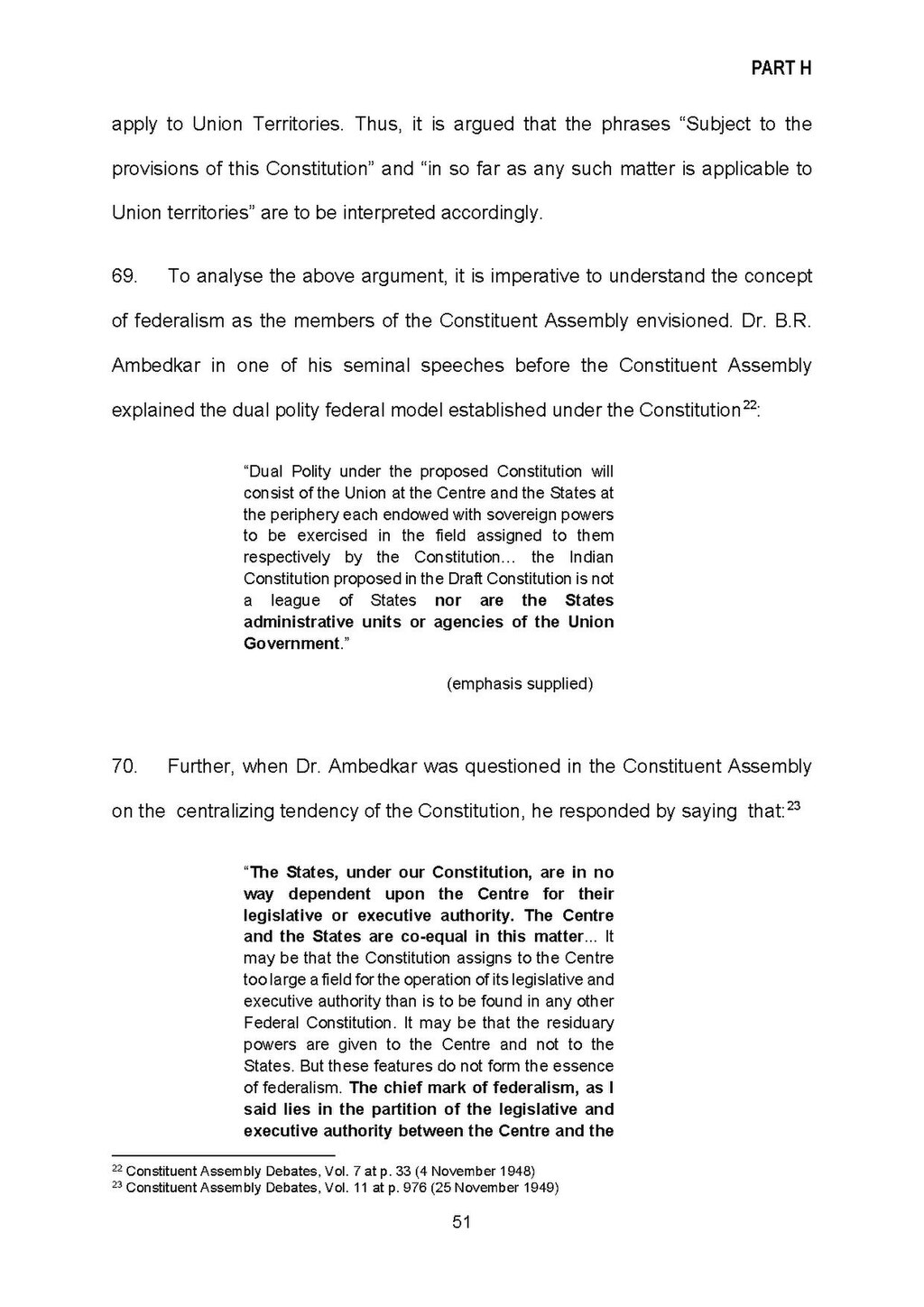apply to Union Territories. Thus, it is argued that the phrases “Subject to the provisions of this Constitution” and “in so far as any such matter is applicable to Union territories” are to be interpreted accordingly.
69. To analyse the above argument, it is imperative to understand the concept of federalism as the members of the Constituent Assembly envisioned. Dr. B.R. Ambedkar in one of his seminal speeches before the Constituent Assembly explained the dual polity federal model established under the Constitution[1]:
“Dual Polity under the proposed Constitution will consist of the Union at the Centre and the States at the periphery each endowed with sovereign powers to be exercised in the field assigned to them respectively by the Constitution… the Indian Constitution proposed in the Draft Constitution is not a league of States nor are the States administrative units or agencies of the Union Government.”
(emphasis supplied)
70. Further, when Dr. Ambedkar was questioned in the Constituent Assembly on the centralizing tendency of the Constitution, he responded by saying that[2]:
“The States, under our Constitution, are in no way dependent upon the Centre for their legislative or executive authority. The Centre and the States are co-equal in this matter... It may be that the Constitution assigns to the Centre too large a field for the operation of its legislative and executive authority than is to be found in any other Federal Constitution. It may be that the residuary powers are given to the Centre and not to the States. But these features do not form the essence of federalism. The chief mark of federalism, as I said lies in the partition of the legislative and executive authority between the Centre and the
51
